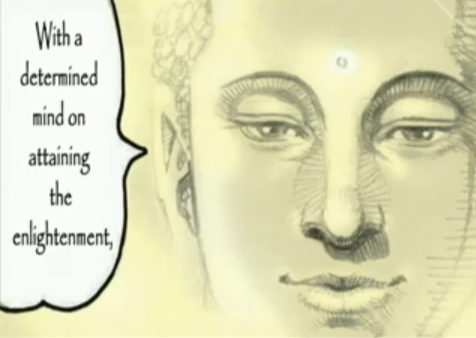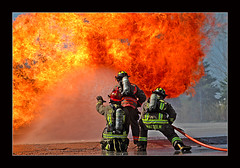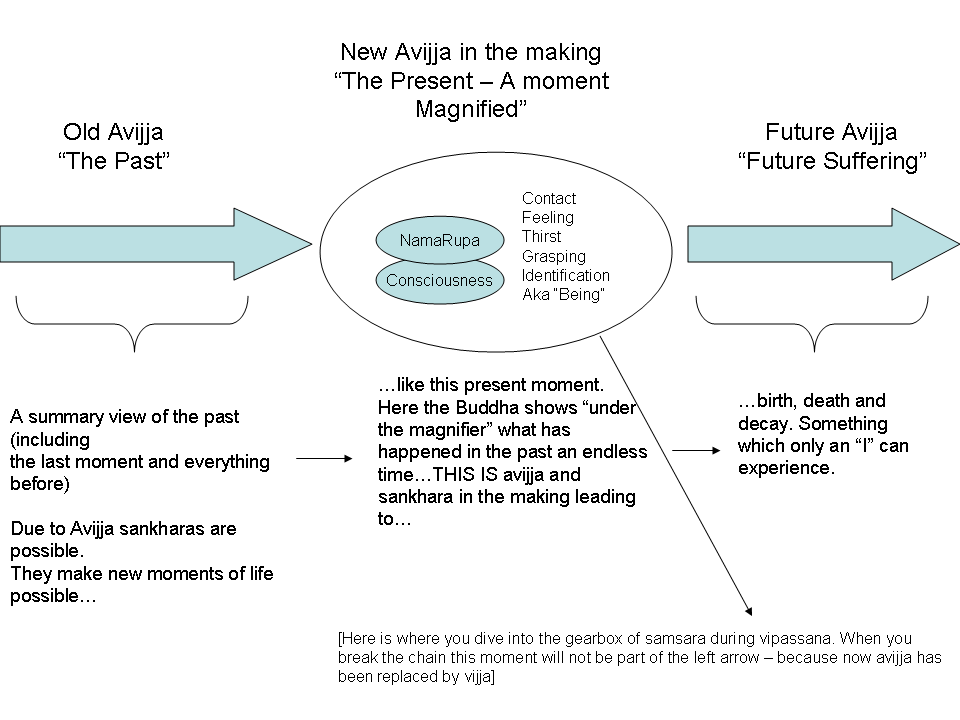Famous words by the Buddha:

Vuttaṃ kho panetaṃ bhagavatā: yo paṭiccasamuppādaṃ passati so dhammaṃ passati; yo dhammaṃ passati so paṭiccasamuppādaṃ passatīti. Paṭiccasamuppannā kho panime yadidaṃ pañcupādānakkhandhā. Yo imesu pañcasu upādānakkhandhesu chando ālayo anunayo ajjhosānaṃ so dukkhasamudayo. Yo imesu pañcasu upādānakkhandhesu chandarāgavinayo chandarāgappahānaṃ, so dukkhanirodho’ti
Now, the Blessed One has said, “Whoever sees dependent arising sees the Dhamma; whoever sees the Dhamma sees dependent arising.” And these things — the five groups of grasping — are dependently arisen. Any desire, embracing, grasping and holding-on to these five groups of grasping is the origination of suffering. Any subduing of desire and passion, any abandoning of desire and passion for these five grasping-groups is the cessation of suffering. [MN, 28]”
Intriguing, indeed. But what does it mean “to see dependent origination”?
Surely, it does not imply simply some intellectual grasp of this list of concepts which are mentioned in almost every Buddhist book.
It should be clear from this passage quoted from the Middle Length Sayings and many other instances that the concept of paticcasamuppada tries to focus on this very present moment – how it comes about, what it consists of and how it conditions the next moment(s).
Now we don’t know about time, but whatever present moment of reality we look at we find and recognize these factors which the Buddha explained as paticcasamuppada…and, like in layers of different abstraction [think: OSI Model] all of them rest on the preceding ones or wrap them into higher levels of complexity: Build on the background of ignorance does consciousness and name and form play through the senses. And from mere tanha for more arises via mana into full fledged views and ideas (ditthi) our ego. Not so much in time, as you can see, as in layers of complexity or papanca, proliferation.
If you will, paticcasamuppada explains life. And every time you are able to explain something thoroughly you can manipulate it (sounds like science? Well, not materia-listic science but real-istic science.**
If you are still following conventional commentarial explanations that dependent origination mainly talks about three lives, the things I just mentioned but especially the interpretations which follow will definitely escape you. Therefore, to make most out of this post (or for later referencing) please read these articles/clarifications first, before you continue..or come back to them, in case you like to better understand what the following observations are based on:
- Ñāṇavīra (probably the first in modern times to note this),
- Ñāṇananda – discusses this in even more detail than Ven. Nyanavira from Nibbana Sermon 2 to at least Nibbana Sermon No. 6
- Buddhadasa – the only Thai monk who follows this refined understanding
- and Bhikkhu Bodhi’s abhidhammic-materialistic criticism who brings forth all arguments against seeing paticcasamuppada mainly focusing on the present moment, but could be easily refuted, IMHO).
And while you could still apply paticcasamuppada to explain rebirth, that is definitely not at its center core…If that did not become clear yet, wait till the end of this blog post :-). Wait, lets restate this: Paticcasamuppada only talks about re-birth: The rebirth which takes place in each moment. Once you understand continuity through conditions on this scale, it is kind of a given that life will go on no matter what – as long as those conditions are in place.
For the Buddha the problem did not lie in a past or future life, but the present moment.
Let me introduce you to a (maybe clumsy) simile which might make you aware of how your every day vipassana meditation can be seen in terms of navigating through the layers of paticcasamuppada:
Imagine there is a leak in a pipe or fountain and water gushes and streams out. Lets say “you” are a little ball, which dances on this fountain of water.
Every time your noting is quick and fast what will happen is that you start diving down into that fountain at various levels, sometimes closer to its source sometimes only superficial. What is the source? The birth of this very moment. Now, and now, and now….you get it.
That is why sometimes you only note concepts, emotions…the world…at a very conceptualized, proliferated level.
Here it is that you break precepts, or get into fights, that you vote for parties or fight over religious dogmas.
At other times you note your identification with these things. Further breaking into those layers of experiential abstraction at other times you note the feeling which underlies these objects.
Increasing concentration and insight further and you sometimes go as deep as contact…towards the event horizon of each current moment.
 You note consciousness and name and form in its barest notability. And as we know from the definition of paticcasamuppada… the interplay of consciousness and name and form in this moment is based on intentions of the moment(s) [and yes, lifes] before…which in due course can only arise when ignorance of exactly this entire process wraps us up.
You note consciousness and name and form in its barest notability. And as we know from the definition of paticcasamuppada… the interplay of consciousness and name and form in this moment is based on intentions of the moment(s) [and yes, lifes] before…which in due course can only arise when ignorance of exactly this entire process wraps us up.
So the past is made up of myrads of moments like the present one. And because in those moments you “were” under the influence of not knowing you created intentions, preparations, determinations, creations – whatever we should call those sankharas which lead to new moments of existance like the current one. And here, in this moment again, you are wrapt up in avijja, or “ignorance” of that process of being wrapt up. And so now too, you work on the foundation for future moments. But this present moment, could be the very last.
I admit, this is difficult to understand. So yes, I just threw the common understanding (and until recently also my) understanding overboard which says that in and through vipassana we only [sic] “break paticcasamuppada at the feeling level”.
I say we can and do break into these links at various levels all the time in our vipassana sessions.
Sometimes we note a feeling. What about the rest of the 5 groups of grasping in that moment? Are the five groups of grasping chained and come one after the other in time like “moments”. No, they do not. These terms are just names to describe experience. And sometimes our awareness (part of name and consciousness) witnesses one part of itself in a moment of vipassana. But then, in the next moment, we are already at the next moment of life.
However, until we get down to the level of consciousness and name and form – we (our “I”, you remember, the little ball) is all the time pushed up again by the fountain.
Does not that feel exactly like vipassana? Sometimes a series of extremely refined “notings” and sometimes we find ourselves caught up in larger emotions and ideas. We are delving into (i.e. recognizing) parts of the now-reality in varying degrees of abstraction: More often emotions, ideas. Less often pure object. Even less often just the feeling of a moment. Rarely what lies beyond – where in the “contact” consciousness and name-and-form align.
So what are we trying to get to?
If in this moment we would be able to stop at the level of consciousness and name and form (where the present moment is conceived in) we would have removed the vail of ignorance, destroyed sankharas (at least for one moment) and thus “we” would extinguish the foundations for the birth of (or better “into”?) the next moment.
In that one moment the entire pyramid of life comes falling down. Vinnanassa nirodhena … etth’etam uparujjhati… …bhavanirodho nibbanam …sankharasamatho etc. etc.
The implications of understanding this (i.e. theoretically and even more so pragmatically) are quite numerous.(*)
We now understand what in fact we are trying to achieve in our vipassana -mindful-noting-pure-attentional mode. We understand, that it is not time (although that might be helpful) but rather skill/ability gained through pushing this mental cultivation towards the brink of experiental existance…
 Have you ever tried to extinguish a candle flame with two fingers? Sometimes you need several attempts..you get closer and further away from the wick but one moment you succeed and the dancing burning fighting flame disappears… smoke (phala samapatti?) indicates the attainment but overall peace concurs.
Have you ever tried to extinguish a candle flame with two fingers? Sometimes you need several attempts..you get closer and further away from the wick but one moment you succeed and the dancing burning fighting flame disappears… smoke (phala samapatti?) indicates the attainment but overall peace concurs.
So what is paticcasamuppada?
A description of experience (like the 5 groups of grasping and the six sense impressions). However, it also indicates the conditions keeping samsara going which, if tumbled lead instantly to the cessation of samsara. Whereas the description of the 5 groups of grasping needs additional qualifiers (groups of grasping) the paticcasamuppada is a self-sufficient explanation of the entire Dhamma.
Again, we might think of the similes of trees and seeds which the Buddha sometimes used for explaining the “sprouting” of consciousness. Each moment of life is like the sprouting of a seedling, planted by the previous fully blossomed paticcasamuppada into the tree of “suffering” and each new seedling in every moment almost instantaneously blossoms into a new tree…and so on… (like the simile of the forest, our life is a growing forest – or a forest fire, as no other trees seem to be left standing)
So with vipassana it seems as if we stop or slow down the blooming or growing of this flower/tree for a short period.
Sometimes we slow down that process just before the flowers open sometimes we delve deeper and stop the growth of its stem or even closer to its root… But we never fully succeed in stopping it at the moment where the seed touches earth. (Whether it is really a when and not a what, I leave that question open for Arahants to answer 🙂
So, in most cases we note and see one part of this process of “growth into concepts” or growth of papanca (proliferation) and each time we only succeed in slowing down for a moment.
It seems however, that that is enough, over the long course of insight meditation to do two things:
- We start to get an experiental understanding of the entire process of “becoming a self” in each present moment
- We start to get “skilled” in our reflective attention (pati-vekkhana == looking back, pati-san-cikkhati == looking back) until there will be one moment where we catch the process where consciousness gets born on grounds of the sankharas of previous moments.

The funny/paradox thing is this: as we unravel our avijja in this moment to see the beginning of this moment we – in the moment we do succeed – also destroy the very foundation for this to happen in the next moment – bam! and before you know it – cessation. Skilled cessation through the power of developed insight.
Of course, having seen that, the mind never completely functions like it did before. It found its own samsara-off switch, 😉 .
=====
(*) Still, this article itself is floating in uncharted territory. I haven’t read the SN, Nidanavagga in quite some time but will try to provide citations to support this line of interpretation (in the next couple of months) – or make you aware of suttas which are in conflict with this paticcasamuppada interpretation.
(**) real. lat < res ‘the thing’ < > same idea in pali for dhamma
Further Reading: This is a nice read very much along the lines of recent observations made on this blog as well: The five groups of grasping as fuel for experience and DO as a description of experience not of things. Thanks, Jaya!














6 comments